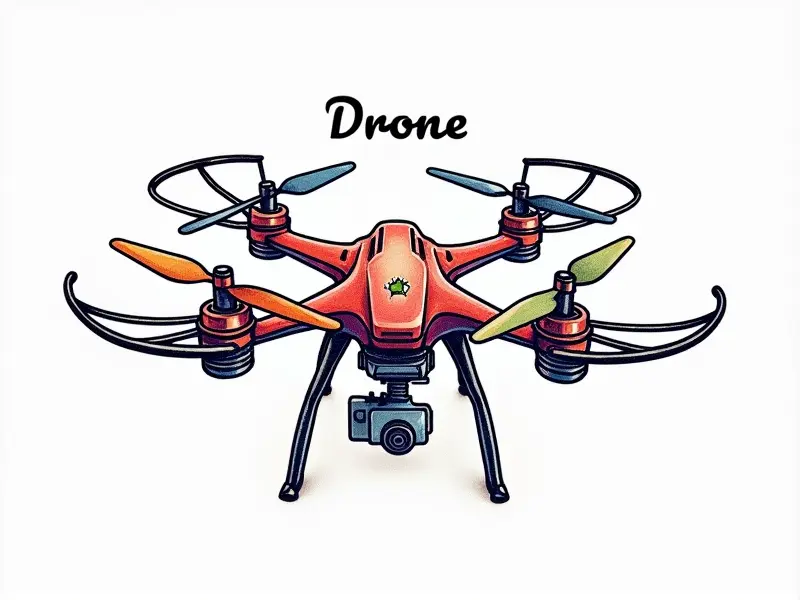What is a smart repair drone?

Introduction to Smart Repair Drones
Smart repair drones are innovative aerial vehicles designed for automated inspection, maintenance, and repair tasks. These cutting-edge devices leverage advanced technologies such as artificial intelligence (AI), robotics, and computer vision to perform complex operations in various industries like construction, telecommunications, and energy. By automating routine yet dangerous tasks, smart repair drones enhance safety, efficiency, and cost-effectiveness.
Benefits of Using Smart Repair Drones
- Safety: Minimizes risks to human workers by performing hazardous inspections and repairs in high-altitude or confined spaces.
- Efficiency: Reduces downtime and accelerates maintenance processes through rapid data collection and analysis.
- Cost-Effectiveness: Lowers operational costs compared to traditional manual methods by reducing labor expenses and minimizing equipment wear and tear.
Top Uses for Smart Repair Drones
Smart repair drones find applications across multiple sectors due to their versatility and capability. Here are some of the most common use cases:
- Telecommunications Tower Maintenance: Inspecting cell towers, antennas, and other communication infrastructure.
- Pipeline Inspection: Evaluating long stretches of pipeline for leaks, corrosion, or structural integrity issues.
- Rooftop Repair: Conducting roof inspections to identify damage from weather events like hailstorms or heavy snowfall.
Smart Repair Drones: A Game Changer
The advent of smart repair drones marks a significant shift in how industries approach maintenance and repairs. These autonomous systems offer unparalleled precision, speed, and reliability, transforming traditional methods into more efficient and safer practices. As technology advances, the capabilities of these drones continue to expand, enabling them to tackle even more intricate tasks.
Advantages of Smart Repair Drones
- Enhanced Data Collection: Equipped with high-resolution cameras and sensors, smart repair drones gather detailed information about structures and equipment, facilitating accurate analysis and reporting.
- Real-Time Monitoring: Providing instant feedback to operators via live video feeds, enabling real-time decision-making and intervention.
- Scalability: Easily scalable solutions that can adapt to varying project sizes and requirements without compromising performance or quality.
Smart Repair Drones in Action
In practice, smart repair drones are deployed for a wide range of tasks. For instance, they inspect wind turbines by flying close enough to detect wear patterns on blades while maintaining safe distances from moving parts. Similarly, these drones assess the condition of solar panel arrays, identifying faulty cells or connectors that may affect energy output.
The Future of Drone Repairs
Looking ahead, smart repair drones are poised to become an indispensable tool in numerous industries. With ongoing advancements in AI and robotics, future iterations will likely feature greater autonomy, improved durability, and enhanced payload capabilities. This evolution promises even more sophisticated applications, further solidifying the role of these devices as essential assets for maintenance operations.
Smart Repair Drones for Inspection
A critical function of smart repair drones is their ability to conduct thorough inspections with minimal disruption. Whether it's checking bridges for cracks or examining substations for electrical anomalies, these drones provide comprehensive visual and thermal data that aids in proactive maintenance planning. Their non-invasive approach ensures that inspected areas remain operational without the need for shutdowns.
Innovations in Smart Repair Drones
Recent developments include integration with predictive analytics software to forecast potential equipment failures based on historical inspection data. Additionally, drones equipped with robotic arms and specialized tools can now perform minor repairs autonomously, reducing the need for human intervention in hazardous environments.
Understanding Smart Repair Drone Tech
The technology behind smart repair drones encompasses several key components:
- Sensors and Cameras: High-definition cameras capture detailed images and videos, while various sensors measure environmental conditions such as temperature, humidity, and air pressure.
- Data Processing: Onboard or cloud-based systems process raw data into actionable insights through sophisticated algorithms.
- Aerial Navigation Systems: Advanced GPS and inertial measurement units (IMUs) guide the drones along pre-programmed routes with pinpoint accuracy.
Smart Repair Drones for Emergency Repairs
In emergency situations, smart repair drones can swiftly assess damage and deploy necessary resources. For example, after a natural disaster, these drones can quickly survey affected areas to identify critical infrastructure issues requiring immediate attention, thereby expediting relief efforts.
Conclusion
The emergence of smart repair drones represents a transformative leap forward in the field of maintenance and inspection technology. By integrating cutting-edge AI, robotics, and sensor technologies, these devices offer unparalleled advantages over conventional methods. As their capabilities continue to evolve, smart repair drones are set to revolutionize how industries approach routine yet challenging tasks, ensuring greater safety, efficiency, and cost-effectiveness.

